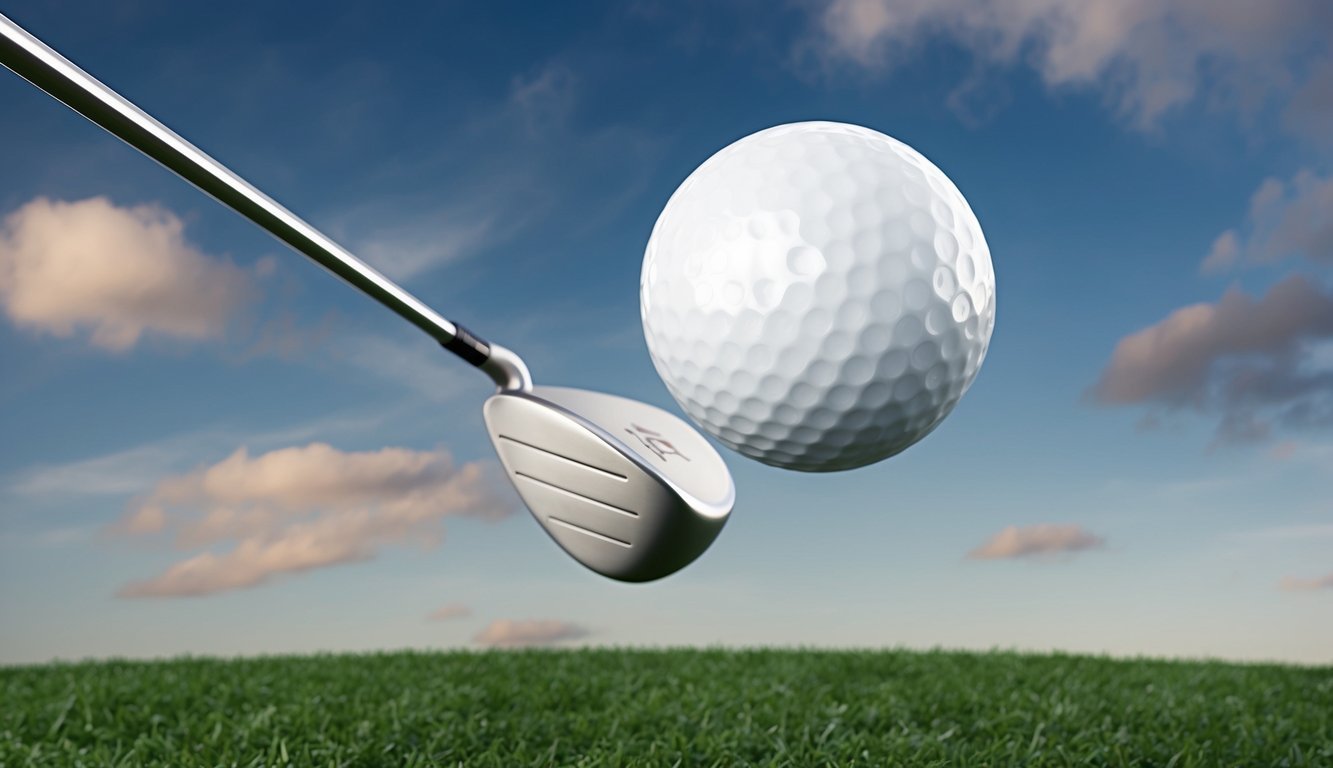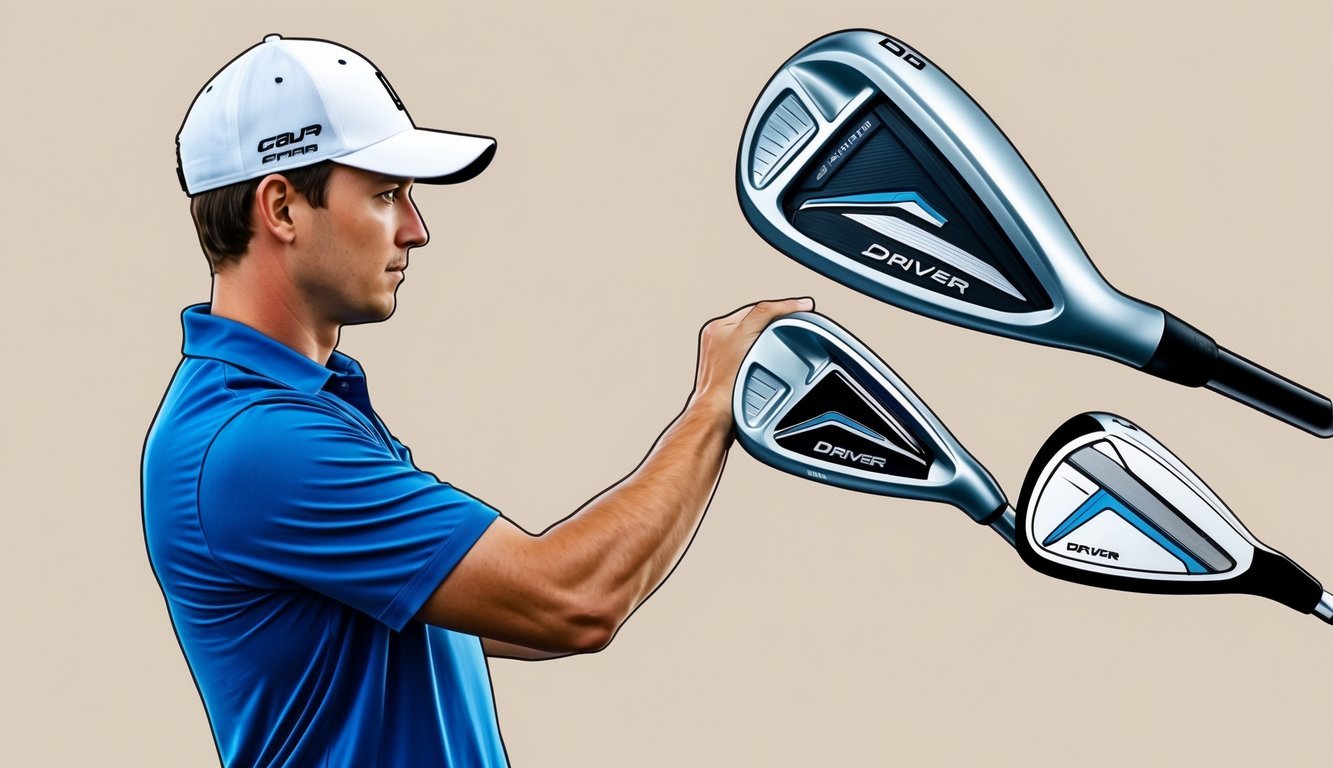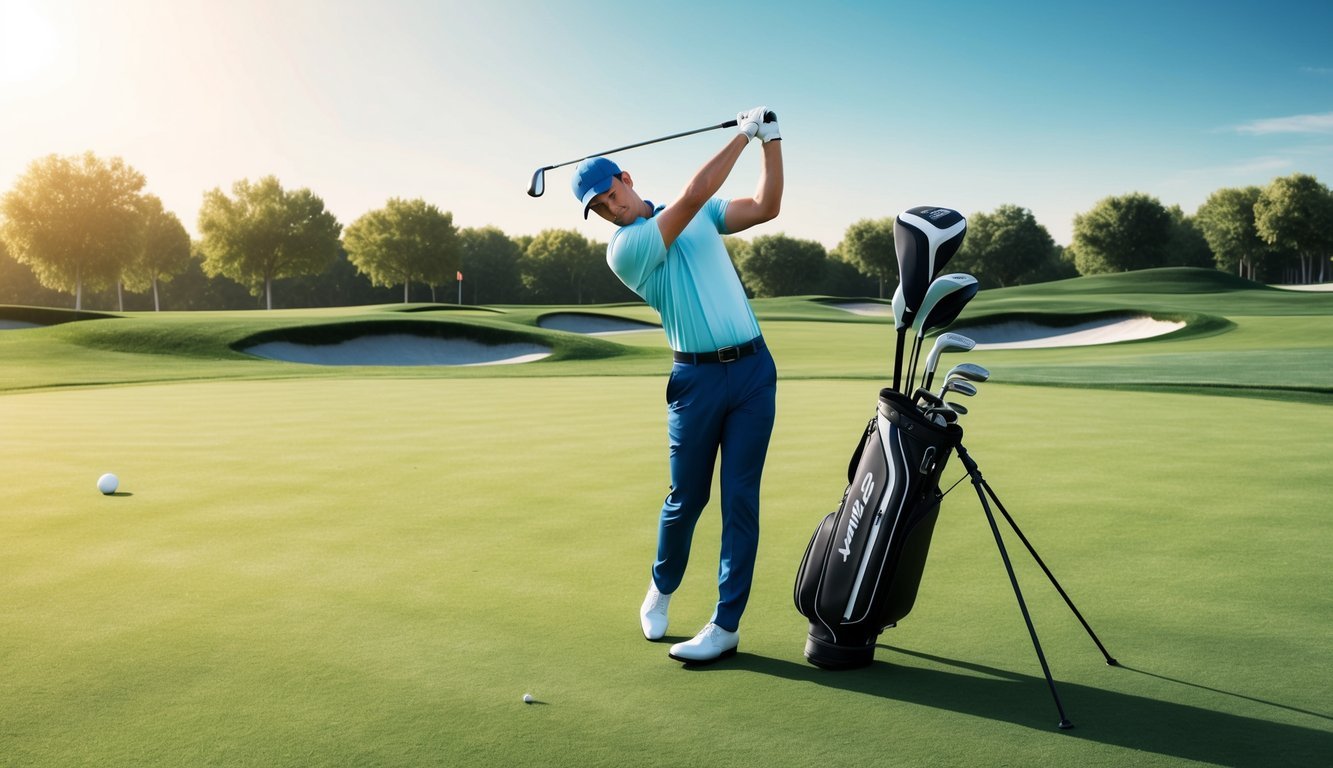Choosing the right driver loft is crucial for improving your golf game.
It can seem daunting at first, but understanding the impact of different lofts can significantly enhance your driving performance.
A driver with a 10.5-degree loft is often recommended for beginners and high handicappers due to its forgiving nature and higher ball flight.
Meanwhile, a 12-degree loft might benefit those seeking added distance with slower swing speeds.

It’s also important to consider how your swing speed and attack angle can affect which driver is the best fit for you.
If your swing speed is mid-range, between 95-104 mph, selecting a driver loft between 10-11.5 degrees may fit your needs best, providing an optimal balance of distance and accuracy.
Understanding the role of technology in driver design can be advantageous, especially with recent innovations that offer more tailored experiences to match individual play styles.
As you delve deeper into these considerations, you’ll find that choosing the right driver loft is not only about technique but also about matching your unique game preferences and strengths.
Key Takeaways
- Choose a driver loft based on your swing speed.
- Understand how loft affects ball flight and spin.
- Consider technological advances in driver design.
Fundamentals of Driver Loft in Golf
Understanding driver loft is vital to improving your performance in golf.
The loft angle affects your ball’s launch, distance, and overall control.
It’s important to tailor your loft choice based on your skill level, swing speed, and playing conditions.
Explaining Loft and Its Purpose
Loft refers to the angle of the clubface relative to the vertical plane.
Measured in degrees, it influences how high your ball will rise upon impact.
Higher lofts produce more backspin, allowing the ball to fly higher.
This characteristic is crucial for players who need more lift and control.
On drivers, typical lofts range from 8 to 12 degrees.
Beginners and high-handicap players usually benefit from drivers with more loft.
This helps them achieve a better launch, especially if they have slower swing speeds.
Pros may opt for lower lofts; this enables a more penetrating ball flight.
Impact of Loft on Distance and Trajectory
The relationship between loft and distance is significant.
Generally, lower lofts result in longer distance due to reduced backspin and a lower trajectory.
Conversely, higher lofts lead to shorter drives with increased height and backspin.
This can sometimes affect the distance negatively but offers better control.
Your angle of attack and the club’s launch angle work in unison with loft.
If your swing speed is fast and your angle of attack is upward, a lower loft can help maximize distance.
However, achieving optimal arch requires balancing these factors.
Driver Loft Selection for Different Skill Levels
Choosing the right loft is a tailored decision.
As a beginner, you likely benefit from a higher loft (around 10.5 degrees or more) due to its forgiving nature.
This provides an easier, higher launch angle, compensating for any inconsistencies in your swing.
Intermediate players or those with moderate speed may benefit from adjustable drivers.
These allow fine-tuning of loft settings to match game improvements.
Seasoned pros or low-handicap golfers often lean toward drivers with lower lofts to control trajectory and spin, achieving greater distances with precision.
Optimizing Your Drive
To get the most out of your drive, it’s essential to understand the connection between your swing speed and driver loft, use adjustable hosel technology, and balance your ball’s carry and roll.
These elements are crucial for improving distance and accuracy on the golf course.
The Relationship Between Swing Speed and Loft
Your swing speed significantly impacts the effectiveness of different driver lofts.
If you have a higher swing speed, you might benefit from a lower lofted club, as it helps reduce spin and enhance ball speed.
Conversely, golfers with slower swing speeds may find that higher lofted drivers boost carry and launch angle, leading to optimal distance.
Selecting the right loft aligns your swing speed with the best possible launch conditions.
By focusing on swing mechanics and how they interact with your equipment, you can make informed decisions that potentially enhance your performance.
Understanding these dynamics is vital for maximizing yardage and achieving consistent results.
Adjustable Hosel Technology
Modern drivers often come with adjustable hosel technology.
This innovation allows you to fine-tune your club’s loft and lie angle, tailoring each shot to your preferences and conditions.
The benefits of adjustable hosels extend beyond customization.
This technology empowers you to make quick changes, enhancing your adaptability during a round.
Experiment with settings to find the configuration that complements your swing style and conditions, giving you an edge on the course.
Maximizing Carry and Roll
Balancing between carry and roll is critical for achieving distance and accuracy.
Your driver loft plays a significant role in determining the optimal ratio.
Higher lofts might offer more carry, improving performance on softer fairways, while lower lofts can increase roll for faster course conditions.
To maximize both carry and roll, focus on the interrelated factors like clubhead speed and ball speed.
Each factor interacts to dictate launch conditions and trajectory.
By experimenting with different lofts and their effects on your shots, you are likely to discover a setup that maximizes your distance and precision, tailored to your unique playing style.
Effects of Spin on Ball Flight

Spin significantly impacts how a golf ball moves through the air.
Understanding how backspin and sidespin alter ball flight, as well as how to adjust driver settings and spin loft, can help you optimize your game.
Managing Backspin and Sidespin
Backspin is crucial for achieving distance and control.
Higher backspin creates lift, allowing the ball to stay in the air longer. Too much backspin, however, can reduce roll after landing.
To manage backspin, pay attention to the clubface angle and your swing technique.
Sidespin affects the ball’s trajectory by causing it to curve left or right.
This spin can result from an open or closed clubface at impact.
Understanding how to control sidespin is key to hitting straighter shots and managing hooks and slices effectively.
Driver Settings for Spin Control
Adjusting your driver settings can help control spin for optimal ball flight.
Proper alignment of the driver loft, face angle, and weight distribution can influence spin rate and pattern.
Loft adjustments directly impact backspin; increasing loft generally increases spin.
By adjusting the face angle, you can counteract sidespin tendencies.
Using drivers with adjustable weighting can also influence spin rates.
Moving weights towards the rear of the club can increase backspin, while positioning them forward can help lower spin.
This adjustment can help refine your ball flight consistency.
Understanding Spin Loft
Spin loft is the angle between the club’s attack angle and the loft at impact.
It plays a vital role in determining the ball’s spin rate.
A higher spin loft usually results in more backspin, boosting altitude but potentially sacrificing distance.
To optimize spin loft, focus on the relationship between your swing path and the clubface.
A descending swing path with increased dynamic loft at impact generates more spin.
This technique is especially useful when trying to achieve a high launch with controlled backspin.
Fine-tuning spin loft can help achieve the desired ball flight characteristics, enhancing both accuracy and distance management.
Choosing the Right Driver for You

When choosing a golf driver, it’s essential to consider various factors like club fitting benefits, models available, and your customization options.
Each of these aspects plays a crucial role in tailoring the perfect driver to match your game.
Club Fitting and Its Advantages
Club fitting can greatly enhance your performance on the course.
By finding a driver with the right loft, you ensure optimal distance and accuracy for your swing style.
This process involves analyzing multiple factors such as swing speed and ball trajectory to match you with a suitable option, like the forgiving TaylorMade Stealth or a higher loft driver.
Visiting a professional fitter or well-equipped golf store can give you access to expert advice and the latest driver technology.
PGA and LPGA Tour players often rely on such personalized fittings to gain a competitive edge, making club fitting a valuable step in your golf journey.
Evaluating Different Driver Models and Brands
When evaluating different driver models, it’s important to compare the specifications and reviews of various brands.
Popular options such as the TaylorMade Stealth Plus offer various loft settings, including 9, 10.5, and 12-degree driver.
List features like forgiveness and distance potential on your criteria to zero in on the perfect choice.
Brands often showcase different strengths, so trying several models can help gauge their performance.
Professional endorsements and feedback from golf store professionals may guide you in determining the right path.
Ensure the selected driver aligns with your swing and game objectives.
Customization Options
Personalizing your driver through customization options can significantly impact your game.
Many modern drivers offer loft adjustability, giving you control over launch angles and spin rates.
Selecting between fixed or adjustable options, such as those available in some models, allows you to optimize performance to suit daily conditions or evolving swing characteristics.
Consider factors like shaft length, grip size, and weight distribution.
Exploring club customization choices enables you to build a driver that complements your unique playing style, enhancing both enjoyment and results on the course.
Technological Innovations and Their Impact on Golf Drivers

Technology has revolutionized the world of golf drivers, offering innovations that increase performance and adapt to the capabilities of various players.
From advancements in equipment to the tools that help analyze your swing, these developments aim to improve accuracy and distance for both amateur and professional golfers.
Recent Advances in Golf Equipment
Advancements in golf drivers are perhaps most noticeable in the materials used.
Modern drivers incorporate multi-material clubheads that combine titanium, carbon fiber, and other lightweight composites.
This mix allows manufacturers to create aerodynamic designs that enhance swing speed.
Callaway’s Flash Face design is a notable innovation.
Using hundreds of computer-aided simulations, the design maximizes ball speed across a wider area of the clubface.
This helps golfers of all skill levels achieve greater distance and more forgiving hits.
The Role of Launch Monitors in Driver Selection
Launch monitors such as TrackMan have become invaluable in understanding how different drivers perform for you.
These devices provide data on variables like ball speed, trajectory, spin rate, and launch angle, allowing you to make informed decisions when selecting a driver.
PGA professionals frequently use these monitors during fittings to tailor recommendations that match your swing style.
Whether you’re a beginner or advanced player, these insights ensure that your chosen driver optimizes performance, increasing your chances of consistency on the course.
High-Tech Features in Today’s Drivers
Today’s golf drivers have many high-tech features.
These include adjustable loft and weight options.
These elements can be customized to suit your playing style.
They make it easier to fine-tune driver performance according to specific course conditions.
Many brand-new golf tech advancements focus on creating adjustable hosels and movable weight systems.
These innovations allow you to make adjustments without compromising the driver’s balance.
They also enable you to modify trajectory and spin rates effectively.
The result is a driver that’s more versatile and capable, adapting to changes in your game.

